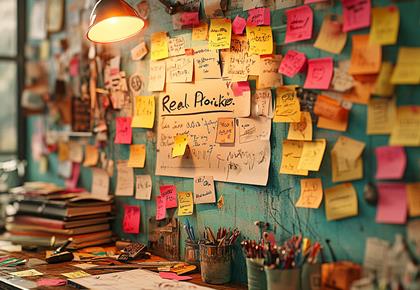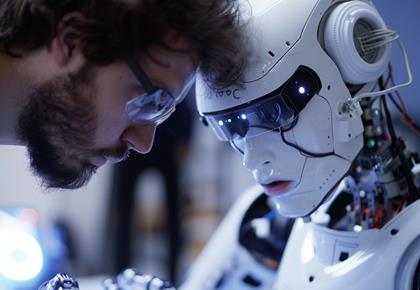Summary
- Moderate inflation signals a healthy economy, encouraging spending and investment.
- Inflation can be caused by demand, rising costs, or wage-price cycles, each impacting prices differently.
- Central banks control inflation through interest rates, money supply, and fiscal policies to maintain economic stability.
Here’s a straightforward look at inflation, why it matters, and how we can tell apart its positive and negative impacts.
Key Takeaways
- Moderate inflation signals a healthy economy, encouraging spending and investment.
- Inflation can be caused by demand, rising costs, or wage-price cycles, each impacting prices differently.
- Central banks control inflation through interest rates, money supply, and fiscal policies to maintain economic stability.
Table of Contents
- What is Inflation?
- Types of Inflation
- Common Misconceptions About Inflation
- Why Inflation Can Be Both Good and Bad
- Keeping Inflation in Check: How Bad Inflation Can Be Controlled
What is Inflation?
In basic terms, inflation is the rise in the overall price of goods and services over time. When inflation occurs, each dollar buys fewer goods and services, effectively decreasing the value of money.Some inflation is natural and even necessary, signaling growth in a healthy economy.
On the other hand, when inflation spirals out of control, it can have serious consequences, impacting purchasing power and overall financial stability.
Types of Inflation
Different forces drive inflation, each creating different effects on the economy. The main types of inflation include:- Demand-Pull Inflation
Demand-pull inflation happens when demand for goods and services exceeds the economy’s ability to produce them. In other words, more people want to buy things than there are things to buy.
This typically occurs in a booming economy, where consumers and businesses are flush with cash and willing to spend more.
Example: If a popular smartphone is in high demand, and production can’t keep up, prices might rise. The same applies to broader consumer goods when people are more financially confident and willing to spend. - Built-In Inflation
Sometimes called “wage-price inflation,” built-in inflation occurs when businesses and employees expect prices to rise in the future and act accordingly.
Workers may demand higher wages, leading businesses to raise prices to cover those costs. This, in turn, creates a cycle where higher wages lead to higher prices, which leads to a demand for even higher wages.
Example: Employees negotiate a 5% wage increase based on inflation predictions, but businesses raise prices to cover wage hikes, feeding into the inflation cycle.
This type of inflation results from a rise in the cost of production, such as labor or raw materials. When these costs increase, businesses may pass them on to consumers in the form of higher prices.
Example If the cost of crude oil rises, transportation and production costs go up, leading to higher prices for products relying on transportation, like groceries.
Common Misconceptions About Inflation
Inflation isn’t always the villain it’s made out to be. Still, due to some common misconceptions, many people see inflation as an indicator of economic turmoil. Here are a few myths worth debunking:Myth #1: Inflation is Always Bad
Moderate inflation, generally around 2% annually, is often seen as beneficial for the economy. This rate encourages people to spend and invest rather than hoard money, keeping the economic wheels turning.Without inflation, the economy could stagnate, resulting in decreased wages and fewer jobs.
Myth #2: Inflation is the Same as the Cost of Living
While inflation does affect the cost of living, they aren’t the same thing. The cost of living refers to the price of basic necessities, like housing and food, in a particular area.Inflation is a broader concept, reflecting the overall increase in prices, which may or may not impact all areas equally.
Myth #3: High Inflation Only Hurts Consumers
High inflation affects businesses, too. When businesses face rising production costs, they are forced to raise prices, which can lower sales as consumers become more cautious with their spending.Small businesses, in particular, often struggle during inflationary periods as they have less pricing power compared to larger corporations.
Why Inflation Can Be Both Good and Bad
Inflation’s reputation as a “bad thing” doesn’t tell the whole story. In reality, inflation has a dual nature — it can be both a friend and a foe, depending on the rate and the context.When Inflation is Good
Moderate inflation can indicate a healthy economy. For instance, inflation often rises when unemployment is low, and wages are high, signaling that people have more spending power. This can lead to increased production and job growth as businesses expand to meet demand.Inflation also helps reduce the real value of debt. As prices and wages increase, debt payments become easier to manage, providing relief to borrowers and even governments with significant debt burdens.
When Inflation is Bad
Inflation becomes a problem when it spirals out of control. High or “hyper” inflation can destroy purchasing power, making it difficult for people to afford basic goods.In countries where inflation is unchecked, like Venezuela in recent years, the value of currency has plummeted to the point where people need stacks of cash for simple purchases. This erodes trust in the currency and can destabilize an economy.
For people on fixed incomes, such as retirees, high inflation is especially damaging because their income doesn’t rise with inflation, reducing their purchasing power.
Keeping Inflation in Check: How Bad Inflation Can Be Controlled
Governments and central banks play a key role in controlling inflation. By adjusting interest rates and influencing money supply, central banks can either encourage or dampen spending. Here’s how:- Raising Interest Rates:
When inflation is high, central banks can raise interest rates. This makes borrowing more expensive and encourages saving, which can reduce spending and lower inflation. For example, the U.S. Federal Reserve raised rates in the early 1980s to combat high inflation, which successfully brought it down. - Reducing Money Supply:
By slowing down the printing of money or selling government bonds, central banks can reduce the money in circulation. With less money available, demand decreases, which can help bring down prices. - Fiscal Policies:
Governments can also adjust taxes and spending to influence inflation. Reducing government spending or increasing taxes can cool an overheated economy, while spending more can stimulate demand in a slow economy.

Are you brainstorming your way to a great startup idea? You might be doing it all wrong. Here’s what most founders miss

Starting a business to escape burnout? You might be trading one grind for another. Here’s the truth nobody tells you about being your own boss.

Paul Graham’s golden rule for startups: Do things that don’t scale. 🤔 Confused? Don’t be—here’s why your unscalable efforts today lay the foundation for massive growth tomorrow.

Myth busted: You don’t need a mountain of cash to start a business! Learn the truth behind 10 common myths about entrepreneurship

Ever wonder if having a big-name founder means a startup is bound to succeed?

Worried about robots taking over? Let's flip the script! See how AI is actually enhancing 10 key job sectors for the better. Curious?

